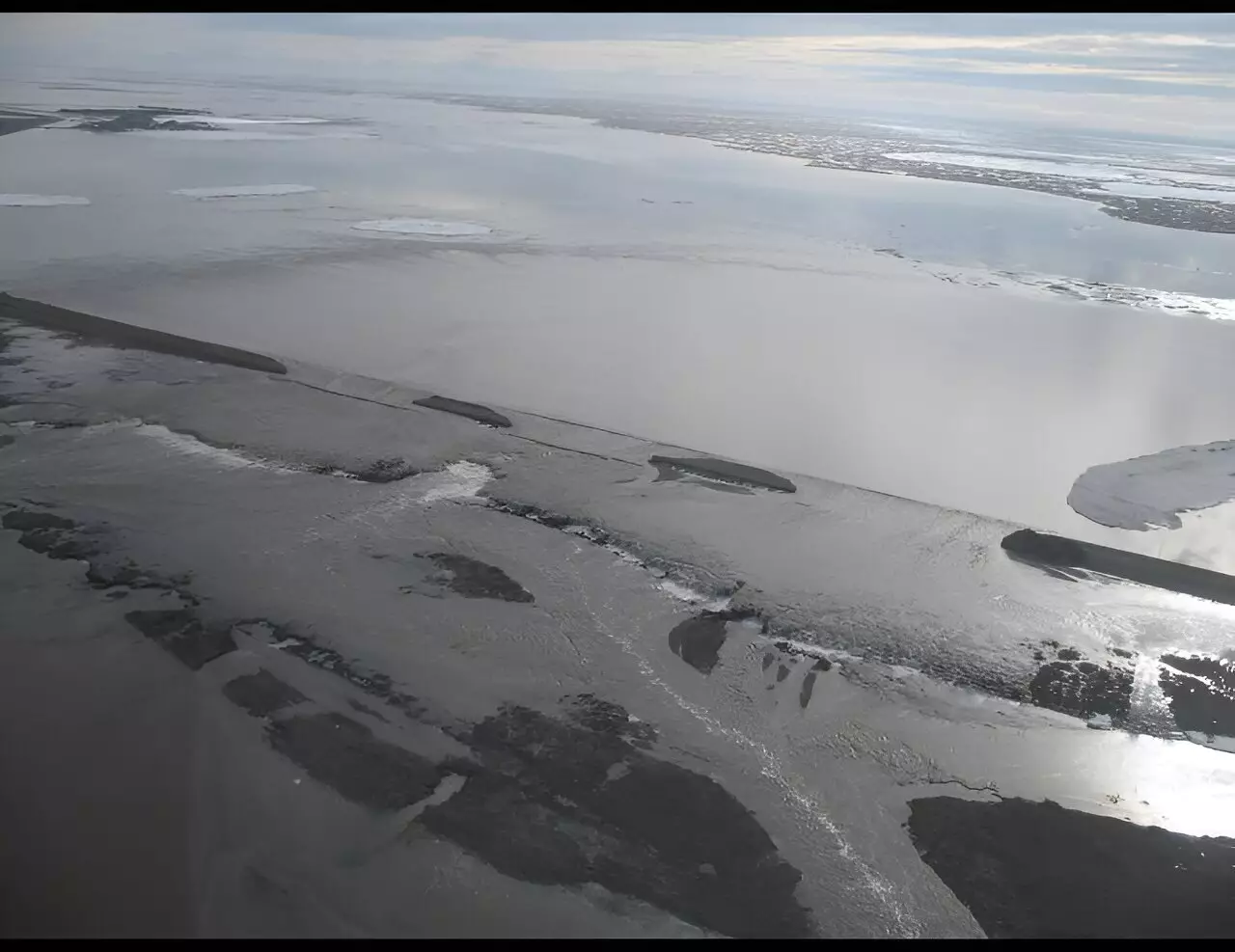The 2015 flooding of the Sagavanirktok River in northern Alaska not only caused immediate impacts such as the closure of the Dalton Highway but also had long-term effects on ground subsidence in the region. Assistant professor Simon Zwieback, along with a team of scientists from the University of Alaska Fairbanks Geophysical Institute, conducted a study to understand the changes in the permafrost-rich area following the flood. Their findings, published in the journal Permafrost and Periglacial Processes, shed light on the complex relationship between flooding and the permafrost landscape.
The flooding, which began in mid-May 2015, resulted in the spilling of floodwaters onto the Dalton Highway and even reaching Deadhorse airport. The authors of the study attribute the chaotic flooding to a buildup of aufeis, a layered ice formed from frozen river water. Aufeis diverted the thawing river water away from natural channels, exacerbating the flooding. Moreover, human activity in the region, driven by the expansion of the Prudhoe Bay oilfield and the presence of the Dalton Highway, has interfered with natural drainage patterns.
The flood was found to stimulate subsidence by warming the ground and causing the melting of ground ice. Substantial quantities of ice, in the form of ice wedges and segregated ice, are present in the soil in the area. The initial subsidence triggered changes on the surface, such as ponding of water, which further intensified the thawing process. This subsidence was most pronounced in flooded locations and remained active for two years after the flood.
The study revealed that various factors drive ground subsidence, including the disturbance of organic layers and sediment deposition. Sediment settling into the soil displaces insulating air pockets, allowing more heat to penetrate. Therefore, subsidence occurred in areas with high ice content and organic layer disturbance, but not in ice-poor floodplains. The presence of fine-grained sediment in the soil plugs taken at two locations indicated possible sediment deposition from the flood. However, further research is needed to conclusively determine its origin.
Interestingly, the researchers observed that ice-rich locations experiencing subsidence showed increases in greenness and wetness. Conversely, ice-poor floodplains experienced greening without significant deformation. The study highlights the long-term benefits of flooding, as it deposits sediment and increases insulating vegetation cover and organic matter. Over time, this leads to a thinning of the active layer, allowing the growth of ice wedges and segregated ice. These changes result in increased elevation and reduced flood frequency.
The research carried out by Zwieback and his team is particularly significant in the context of increasing climate stresses in the Arctic. As the region becomes wetter and flood regimes change, it is crucial to understand how riverine landscapes respond to these alterations. The findings emphasize the need for continued monitoring and research in the face of climate change and its impacts on vulnerable permafrost regions.
The 2015 flooding of the Sagavanirktok River in northern Alaska not only had immediate impacts but also led to long-term ground subsidence in the permafrost-rich region. The study conducted by Zwieback and his team shed light on the complex relationship between flooding, ground subsidence, and the changing landscape of the Arctic. The findings highlight the importance of understanding and monitoring these processes in order to mitigate the impacts of climate change on vulnerable regions. Continued research in this field is crucial for informed decision-making and the development of strategies to adapt to ongoing environmental changes.


Leave a Reply